Thingiverse

Radon nuclear structure theory
by Thingiverse
Last crawled date: 4 years, 3 months ago
The important element thorium is based on the radon foundation nucleus.
Radon is a gas with a half-life of less than 4 days for all isotopes.
The theory is not approved by educators or any people. The radon nucleus
has a mass number of 220 for the Blender 3D and .obj files for 3D printers.
This model uses the modules provided in 3 loads, previously: cube-3,
pyramid-2, pyramid-3, and the dilated composite pyramid from polonium.
Added protons bring Z to 86 for Rn 220. The protons go in the center
of the cube and on the pyramid-3, plus a long island line of protons
on two sides of the Rn nucleus. This nucleus is shaped like a dart or a jet engine.
It has a nose and a tail end, shown on the top and bottom locations in this thingiverse. A collision of radon with some matter approaching the nose end will hit the armor of the pyramid-6 or it can hit a tip of a pyramid-3, causing decay.
Experimental evidence shows a "pear shape" for the nuclear structure of
Rn. See this paper by someone...
http://ns.ph.liv.ac.uk/~lg/papers/StudiesOfNuclearPearShapesUsingAcceleratedRadioactiveBeams_Archive.pdf
see Figure 4 in that paper of the pear shaped radon nucleus experimental confirmation of the theory
by L.P. Gaffney1, P.A. Butler1, M. Scheck1,2, A.B. Hayes3, F. Wenander4, M. Albers5, B. Bastin6, C. Bauer2, A. Blazhev5 et al
That paper came before my theory, but I made the theory before seeing the paper. We both have a pear shaped proposed nuclear structure.
Thorium will get 4 protons on radon and 6 neutrons also on the exterior of the radon nucleus. Then we can see some opportunity for a phenomenon using geometric reasoning.
Radon is a gas with a half-life of less than 4 days for all isotopes.
The theory is not approved by educators or any people. The radon nucleus
has a mass number of 220 for the Blender 3D and .obj files for 3D printers.
This model uses the modules provided in 3 loads, previously: cube-3,
pyramid-2, pyramid-3, and the dilated composite pyramid from polonium.
Added protons bring Z to 86 for Rn 220. The protons go in the center
of the cube and on the pyramid-3, plus a long island line of protons
on two sides of the Rn nucleus. This nucleus is shaped like a dart or a jet engine.
It has a nose and a tail end, shown on the top and bottom locations in this thingiverse. A collision of radon with some matter approaching the nose end will hit the armor of the pyramid-6 or it can hit a tip of a pyramid-3, causing decay.
Experimental evidence shows a "pear shape" for the nuclear structure of
Rn. See this paper by someone...
http://ns.ph.liv.ac.uk/~lg/papers/StudiesOfNuclearPearShapesUsingAcceleratedRadioactiveBeams_Archive.pdf
see Figure 4 in that paper of the pear shaped radon nucleus experimental confirmation of the theory
by L.P. Gaffney1, P.A. Butler1, M. Scheck1,2, A.B. Hayes3, F. Wenander4, M. Albers5, B. Bastin6, C. Bauer2, A. Blazhev5 et al
That paper came before my theory, but I made the theory before seeing the paper. We both have a pear shaped proposed nuclear structure.
Thorium will get 4 protons on radon and 6 neutrons also on the exterior of the radon nucleus. Then we can see some opportunity for a phenomenon using geometric reasoning.
Similar models
thingiverse
free

Thorium magnified ten trillion X
...ed to build integer geometries for the tetrahexahedron.
errata : i fixed an error in the blender 3d and .obj files after 3 hours.
thingiverse
free

Promethium riddle geometry
..., it is a correct theory.
correct theories give correct results, quickly.
my theoretical physics are not approved by an educator.
thingiverse
free
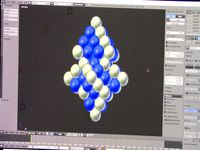
Krypton nucleus
...ttps://impuremath.wordpress.com/charge/
charge essay in the link. it shows how charge distribution is ruled in the nucleus of kr.
thingiverse
free

Polonium 209 nuclear vulnerability
...uclear structure is discussed next to nihonium in my websitehttps://impuremath.wordpress.com/nihonium/
not approved by educators.
thingiverse
free

Integer Geometries for Light Nucleii
...second load of integer geometric objects #2 of 3
the cube-3 is for kr. to get the cube-3 for the fe series, see data set #3 of 3.
thingiverse
free

Integer geometric nuclear modules #2 of 3
...elements : cube-4 pyramid-5, dilator-34 up to tantalum
massive elements: pyramid-6, dilator-45 up to og
not approved by educators
thingiverse
free

Element 118: Oganesson
... center.
all elements are now understood, so chemistry can benefit, next.
educators did not approve of this theoretical physics.
3dwarehouse
free

Thorium 236 Option 3
...t001l6 with 4 sextets of spheres added. #post_modern_physics #diquark #extended #monoquark #nucleus #octahedra #quark #skew #thin
3dwarehouse
free

Thorium 234 Option 3
...001l6 with 4 quintets of spheres added. #post_modern_physics #diquark #extended #monoquark #nucleus #octahedra #quark #skew #thin
3dwarehouse
free

Radon 220
...immed triangle of 9 spheres added to 2 faces. #post_modern_physics #diquark #extended #monoquark #nucleus #octahedra #quark #skew
Radon
turbosquid
$7

Radon-T Lamps
...free 3d model radon-t lamps for download as max, obj, and fbx on turbosquid: 3d models for games, architecture, videos. (1274734)
turbosquid
$50

Radon F - Lightyears
... available on turbo squid, the world's leading provider of digital 3d models for visualization, films, television, and games.
turbosquid
$10

Lightyears Radon nigra Table lamp
...d model lightyears radon nigra table lamp for download as max on turbosquid: 3d models for games, architecture, videos. (1342480)
turbosquid
$10

Lightyears Radon nigra Floor lamp
...d model lightyears radon nigra floor lamp for download as max on turbosquid: 3d models for games, architecture, videos. (1342472)
turbosquid
$25

MSBS Grot Modern Modular Assault Rifle Radom 3D model radon
...e radom 3d model radon for download as 3ds, max, obj, and fbx on turbosquid: 3d models for games, architecture, videos. (1445174)
3d_sky
free

thinker of radon
...thinker of radon
3dsky
antique statue the thinker
3d_sky
free

Radon Floor, LightYears
... manufacturer light years. the model is provided in two colors black and nigra. dimensions: height of 1200 mm and 210 mm diameter
thingiverse
free

Rahmenabdeckung Radon Bike. by Rolfi3D
...rahmenabdeckung radon bike. by rolfi3d
thingiverse
rahmenabdeckung radon bike.
thingiverse
free

Radon, the hazmat hero by macouno
...radon, the hazmat hero by macouno
thingiverse
beware... for radon approaches! the hazmat hero.
now also in dual color!
thingiverse
free

Radon Cookie-Cutter by Habichtfrost
...radon cookie-cutter by habichtfrost
thingiverse
first the design, than the print.
Theory
turbosquid
$150

Voxel The Big Bang Theory House
... 3d model voxel the big bang theory house for download as obj on turbosquid: 3d models for games, architecture, videos. (1531748)
3ddd
$1

Tea set from the Big Bang Theory / Набор для чаепития
...qid;=1449144667&sr;=1-66&keywords;=creamer+and+sugar+service
файл мах 2016!!!
+файл мах 2013 vray
+файл мах 2013 corona
3d_export
free

bust of sigmund freud low-poly
...freud, austrian psychologist, psychotherapist, founder of psychoanalysis and the theory of sexuality. he was the first to introduce the...
3d_ocean
$5

Alien Gray
...alien gray 3docean black character color conspiracy theory creature demonic et experiment extraterrestrial fear fiction futuristic gods...
3ddd
free

Covey's stool
...between form, comfort, and functionality. drawing upon buckminster fuller's theory of tensegrity, the stool strikes an elegant balance between...
3d_export
$5

spitfire mk 11
...file spitfiretexture: textures and maps if you have a theory or critique? thank you for your...
3d_export
$5
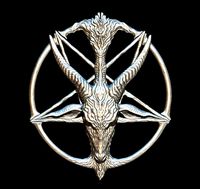
medallion depicting the deity baphomet that the knights templar were accused of worshipping file
...in distance: 0.7mm<br>area smoothing: 0.6mm<br>use towers: check<br>pattern: grid<br>line distance: 1.5mm
thingiverse
free

Theory W by BladeRC
...w by bladerc
thingiverse
theory w prints to clean up the area around the fpv camera and cover the servo linkages for less drag.
sketchfab
$5

String Theory Energy Orb
...nergy orb
sketchfab
string theory energy orb - string theory energy orb - buy royalty free 3d model by parsonsarts (@tomparsons)
thingiverse
free

Fluxite generator theory by Fluxite
... its only a prototype the video explains the theory behind what we are working on.
enjoy the video and share in the experience
Nuclear
3d_export
$30

Nuclear 3D Model
...nuclear 3d model
3dexport
nuclear
nuclear 3d model pavancgowda 55878 3dexport
turbosquid
$5

Nuclear Bomb
...rbosquid
royalty free 3d model nuclear bomb for download as on turbosquid: 3d models for games, architecture, videos. (1658235)
3d_ocean
$17
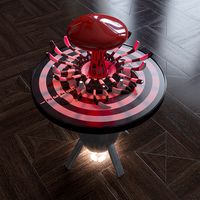
Nuclear bulb
... it imitates explosion. there is also a table on a rocket leg. top of the table has the image of a goal (darts). the ̶...
turbosquid
$19

Nuclear Generator
...e 3d model nuclear generator for download as ma, obj, and fbx on turbosquid: 3d models for games, architecture, videos. (1421861)
turbosquid
$10

Nuclear installation
...l nuclear installation for download as 3ds, obj, c4d, and fbx on turbosquid: 3d models for games, architecture, videos. (1152514)
turbosquid
$99

Nuclear Reactor
... available on turbo squid, the world's leading provider of digital 3d models for visualization, films, television, and games.
turbosquid
$95

Nuclear Explosions
... available on turbo squid, the world's leading provider of digital 3d models for visualization, films, television, and games.
turbosquid
$60

Nuclear fusion
... available on turbo squid, the world's leading provider of digital 3d models for visualization, films, television, and games.
turbosquid
$30

Nuclear Jackrabbit
... available on turbo squid, the world's leading provider of digital 3d models for visualization, films, television, and games.
turbosquid
$19

nuclear storage
... available on turbo squid, the world's leading provider of digital 3d models for visualization, films, television, and games.
Structure
3ddd
$1
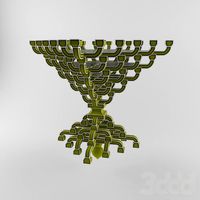
structure
...structure
3ddd
structure
turbosquid
$28
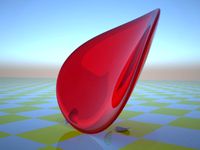
structure
...rbosquid
royalty free 3d model structure for download as max on turbosquid: 3d models for games, architecture, videos. (1338108)
turbosquid
$4
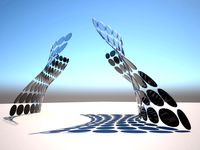
structure
...rbosquid
royalty free 3d model structure for download as max on turbosquid: 3d models for games, architecture, videos. (1338171)
turbosquid
$3

structure
...rbosquid
royalty free 3d model structure for download as fbx on turbosquid: 3d models for games, architecture, videos. (1392940)
turbosquid
free

Structure
...y free 3d model structure for download as 3ds, obj, and blend on turbosquid: 3d models for games, architecture, videos. (1163360)
3d_export
$5

Abandoned structure
...abandoned structure
3dexport
abandoned structure consisting of ground floor and first floor walkable.
3d_export
$5

Small Structure
...all structure
3dexport
small structure static object, formed by a large room and a closet inside, lowpoly model supports the pbr
3ddd
$1
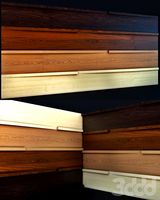
Structure - Kubik
... (в размерах+текстуры+ obj)http://www.lancko.com/structure-collection-kubik-p/lancko-walls-st-ku.htm
archive3d
free

Structure 3D Model
...nstruction structure prefabricated elements
structure - 3d model for interior 3d visualization.
archive3d
free

Structure 3D Model
...chive3d
metal construction structure
structure part-2 - 3d model for interior 3d visualization.
